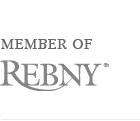Tate Photography
Making art fun: A slide at the Tate Modern.
London has long juggled dual centers. Visitors often saw just one: the West End, site of most upmarket hotels, museums, and high-end stores. For locals, though, the Cockney-accented East End was equally visible; it’s home to the of the City of London, whose gleaming skyscrapers are the capital’s answer to Wall Street. The East End has undergone a decade-long gentrification, and is now the trendiest corner of the city; in its wake, the government has planned makeovers for other, unloved corners of the city center, making them burgeoning, buzzy rivals. Take a day to explore these three different aspects of the city for a true snapshot of 21st-century Lond
A cocktail at the Artesian at the Langham Hotel.
DAY 1: THE INSIDER’S WEST END
Even central London has its secret corners—notably, Fitzrovia and Marylebone, adjacent neighborhoods just north of the Oxford Street shopping drag. Once genteel and bohemian, if a little shabby, both have been transformed since the 1990s: They’re now home to many media companies’ headquarters, as well as high-end restaurants and independent stores. Marylebone is more uniform and compact, while Fitzrovia is more sprawling, with an artsier edge (it was once home to Virginia Woolf).
EATHoney & Co. is a passion project for Israeli husband and wife chef-owners Sarit Packer and Itamar Srulovich. At breakfast, the front sill is piled high with flower water-scented pastries, and during lunch or dinner the pair serves lighter riffs on Middle Eastern classics like pomegranate-molasses sticky chicken or mishmishyia, lamb meatballs slow-cooked in apricots and fresh tomatoes. Pick up a sachet of the house-made spice mix and the pair’s new cookbook to replicate the dishes back home.
SHOPMarylebone High Street, the area’s main artery, is eminently strollable, lined with an impressive selection of independent stores and upscale local chains. Duck into the Edwardian-era, wood-paneled Daunt Books, whose rear room is devoted solely to an eclectic haul of travel books. Nearby Skandium is an Aladdin’s cave of pan-Scandinavian homewares and tabletop, while Tyler Brûlé’s Monoclemagazine also has a jewel box-sized boutique. Detour to nearby Chiltern Street, Central London’s newest luxury strip, and you’ll find the Chiltern Firehouse, now one of the city’s hottest hotels.
PLAY
For a reprieve from the foot traffic, double back to Fitzrovia for a walk through Regent’s Park. It may be less known than Green and Hyde Parks, but it’s far more engaging. Surrounded by Palladian mansions and crescents, the layout is based on a series of concentric circles, the flowerbed-lined lawns bisected by wide walkways for afternoon strolls. There’s a well-kept zoo, as well as the open-air theater for summertime Shakespeare. Hike up steep Primrose Hill to its northern reaches, and you’ll be rewarded with a spectacular vista almost all of London.
EATBerners Tavern is one of London’s hottest restaurants, helmed by one-time Gordon Ramsay protégé Jason Atherton. His quirky British cooking includes dishes like quail on toast, crispy pig’s head, and roasted loin of wild venison from the Scottish Highlands. The grand dining room is a discofied take on an English stately home, with gilt-rimmed paintings cluttering the walls, huge chandeliers, and overstuffed pink banquettes. If it’s crowded, stroll over to the bar for snacks like deep fried calamari and thick-cut British chips.
DRINK
It might seem surprising, but Artesian at The Langham, London hotel is considered by cocktail aficionados to be the world’s best bar. It’s largely due to the magic touch of head bartender Alex Kratena, a 33-year-old Czech expat with an inventive and playful approach to drinks—so much so that he relaunches the menu every year. We particularly like the frozen negroni, served in a Solo cup.

St John Bread & Wine, where the menu changes hourly.
DAY 2: THE EAST END
London has long had two centers: the so-called West End, its upmarket enclave, and the East End, where the capital first began. In the last decade, the East End, centered around the Spitalfields and Shoreditch districts has been transformed by an influx of artists and creatives (Tracey Emin and Gilbert and George have homes and studios there). Think of it as London’s answer to New York’s Williamsburg.
SHOP
A decade ago, the charming red brick Victorian buildings of Old Spitalfields Market were enlarged with a modern annex. In the courtyard, there’s an Etsy-like market seven days a week, but Old Spitalfields Market (or OSM) is best known as a menswear mecca, with a wide roster of British labels represented. Try Albam, for workwear-inspired casual sweaters and raw denim, much of it made in England, or gentleman’s outfitter Hackett, which has an accessories-heavy store here.
EAT
Enjoy a lazy lunch at St John Bread & Wine, the canteen-like offshoot of nose-to-tail pioneer St John that’s housed in a former bank. The menu is smaller at breakfast, but after 11 a.m., other dishes are slowly added each hour, a nod to the rolling, day-long delivery of local produce from suppliers. Most are served at a shareable size: devilled kidneys, for example, or the duck ham with radishes. One exception is the bacon sandwich, which no one should willingly share, piled high with Gloucester Old Spot rashers.
PLAY
Close to St. Paul’s Cathedral, squished between the gleaming office buildings that now jostle for space in the City of London, sits Postman’s Park, an ideal place to pause after lunch. Opened in 1880 on the site of a former churchyard, there’s a fountain and a carp pond, but it’s best known for the loggia that lines one side, covered in ceramic tablets. Each is a memorial to an act of self-sacrifice, with the names of ordinary people who gave their lives saving others. Before you visit, download the free app for iOS or Android—point your smartphone’s camera at a particular plaque, and it will provide the backstory for that humble hero.
SHOP
Thirty years ago, Sheridan Coakley founded SCP as a showroom where he could produce and sell modern British design. (He was an early champion of talents like Jasper Morrison and Matthew Hilton, both now global design superstars.) The browsable, bi-level space is filled with shabby-chic, boho treasures such as blankets, vintage-style children’s toys, china, and glassware. If you’re in need of a quick espresso, the onsite café is an offshoot of neighborhood staple, St John Bread & Wine.
DRINK
Make Brawn, a perennially packed wine and charcuterie bar on Columbia Road, an early-evening destination. The space is deliberately unfussy, with two high-ceilinged rooms, whitewashed walls, and schoolroom-style wooden tables and chairs. You can graze on tapas-like small plates, but your real focus should be the impressive wine list that co-owner Eric Narioo, a French rugby player-turned-importer, has created. It’s strong on biodynamic and natural wines from across Europe, including unexpected finds like a chasselasmade from table grapes.
EATBourne & Hollingsworth Buildings is a sprawling new restaurant-bar on a quiet Clerkenwell street that’s owned by local nightlife impresario Dino Koletsas. The name is a nod to London’s past, honoring a long-defunct but much-missed department store. Appropriately, B&H Buildings has a throwback air, its décor like a collaboration between Hercule Poirot and Kelly Wearstler. The menu is modern British—think terrines, roasted salmon and trifle—but whatever you order, make sure you try the parsnip chips, which are chewy, crispy, and delicious.

Chili with veggies and rice at the Grain Store.
DAY 3: LONDON REGENTRIFIED
Londoners continue to look for underappreciated corners of the city to regenerate. Explore two of the recently regentrified neighborhoods by King’s Cross, the railway-choked district to the north of central London: first upgraded by the arrival of the gleaming Eurostar terminal, the derelict warehouses along the canal here are now thriving. The south bank of the River Thames was similarly re-energized with the arrival of new cultural attractions and better waterside pathways. The best British theater, though, still remains in the West End at a secret, tiny venue on a cobbled back street.
EAT
Amid the repurposed wheat warehouses here—also the new home of fashion college Central St Martins, which counts Galliano and McQueen among its alumni—is Grain Store, run by Michelin-starred chef Bruno Loubet. Though not strictly vegetarian, the menu showcases vegetables in every dish: Try spouting seeds and beans with miso eggplant and a sliver of chicken skin, or the hearty “chili con veggie.” On a warm day, ask for a table on the 80-seat terrace overlooking the new fountains on the piazza.
SHOP
Hop on the Northern Line tube southbound to the banks of the River Thames, home to Borough Market. Now more than a decade old, it’s inspired many copycats but none bests this original: the old Victorian market under the railway viaduct was repurposed in 2001 to sell artisanal foodstuffs, and has become a chefs’ mecca. Wander through its three main areas—Green, Middle and the outdoor Jubilee market—and pick up locally-made products, whether gooey chocolate cakes from Konditor & Cook or cheese from Neal’s Yard Dairy.
PLAY
Close by is the other major attraction that helped re-energize the once-windswept South Bank: Tate Modern. A power station reopened as a branch of the British art-focused gallery, Tate, in 2000, with the intention to broaden the museum’s scope beyond the British Isles and stage blockbuster modern art shows. The onetime Turbine Hall, a cathedral-like space, is offered annually to a single artist who creates a site-specific work there each fall: Carsten Höller filled it with shiny metal slides, while Olafur Eliasson’s dreamy Weather Projectfeatured a huge sun-like light.
PLAY
The National Theater on the South Bank may stage impressive shows (it’s where War Horsefirst debuted), but the real hot ticket is in the West End at the Donmar Warehouse. The 251-seat auditorium is a favorite for high-profile talents treading the boards in London; for example, recently appointed head Josie Rourke recently lured Tom Hiddleston to topline Coriolanus. Tickets are scarce, but a well-connected concierge can likely source a pair.
EAT
After the performance, enjoy the ultimate insider’s post-theater meal at J Sheekey. Theaterland’s de factocanteen for more than a century, the wood-paneled room with its cozy nooks is popular with actors and audiences alike. The menu is heavy on classic seafood, though the standout is a tangy monkfish and prawn curry. Don’t worry about running late for your table, though: when calling to book, the maitre d’ John will ask what show you’re seeing and then advise the appropriate reservation time.

 USA 917-679-1211
USA 917-679-1211






 © Jackson Lieblein, LLC 2015.
© Jackson Lieblein, LLC 2015.
